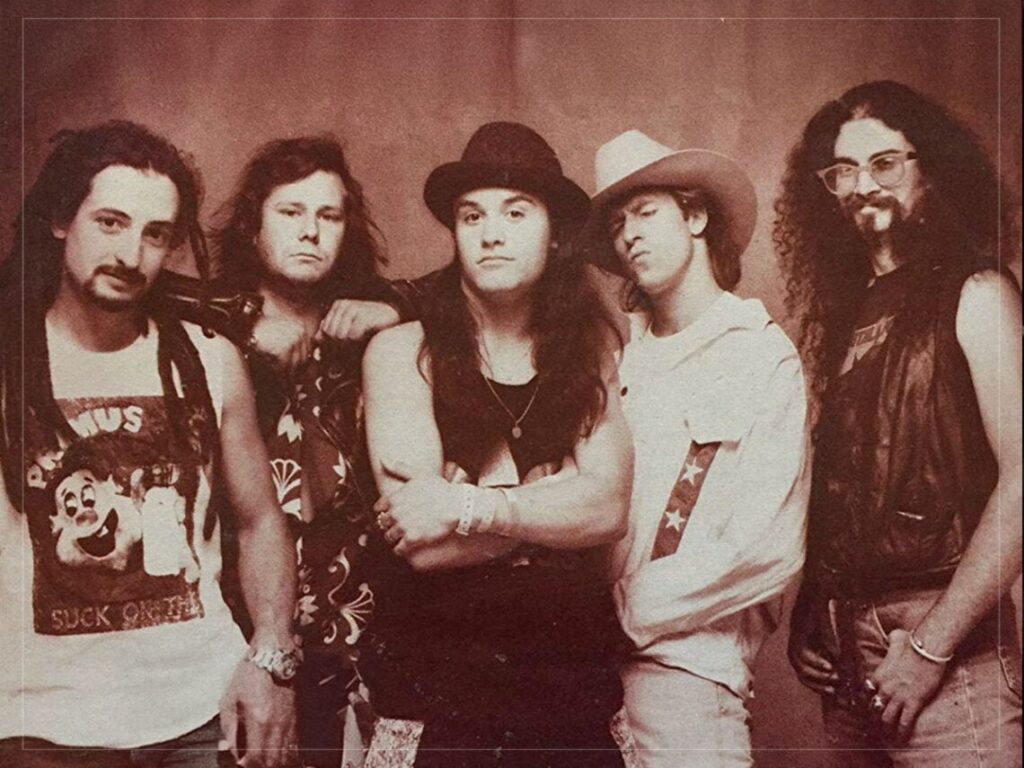The love song Johnny Marr wrote about a skyscraper: “It might happen when you look up”
 Posted On
Posted On
(Credits: Far Out / Andy Cotterill)
There goes a story of Johnny Marr buying an iconic guitar in the streets of New York. The year was 1984, and in a city of blinding lights and vast skyscrapers walked a young Marr, wide-eyed and with The Smiths’ debut album preparing for imminent release. Living out another chapter of their fantasy, they were in the city meeting Sire Records president Seymour Stein – who preceded to tell them a story about a guitar he bought for Brian Jones in New York.
Recounting the story, Marr said: “So I saw my opportunity right there. I told him, ‘Well, if you take me to get a guitar in New York, we’ll sign to your record label.’ And in a moment of weakness, he took the bait and said, ‘Sure, I’ll get you a guitar’”.
Fast forward a few months, and Marr was in New York walking down 48th Street with Stein when Marr spotted a 1959 Gibson 335 with a Bigsby tailpiece in the shop window. The guitar called Marr’s name, and with a knowing tap on Stein’s shoulder, history was made.
They say songs exist within the walls of a guitar, and the right player draws it out of them, and it was certainly true in this case. Upon playing the Gibson, which provided a completely unique sound palette to Marr’s pre-existing Rickenbacker setup, his fingers played the chords of what is now a seminal Smiths hit ‘Heaven Knows I’m Miserable Now’.
But despite the genesis of a guitar/guitarist relationship being formed in the shadows of New York’s skyscrapers, the song born from it has no relation to the landscape. But rather than bury an open goal, Marr thought a song about a skyscraper was best done by beating ten players and putting it in the top corner.
In 2014, he released his second studio solo album, Playland, which featured a track called ‘Dynamo’. The song’s lyrics read, ‘Everybody believe it / You’re an actual wonder’, which Marr later admitted was about a skyscraper in Manchester.
Speaking to Mojo, Marr said it was about the CIS tower in Manchester: “It’s a love song to a building,” he continued, “but it could also double as a love song to a person or even to oneself. Inevitably, however hard you try, songs turn out to be about yourself in some way.”
In a later interview with NME, Marr elaborated, saying the song’s subject explores his fascination with psychogeography: “It might happen when you look up at a building, modern or old, on a clear summer day, big blue sky behind it filled with jet streams, and not being able to help think of stories that go with it all,” he said. “I’ve been interested in the city and the people in it since I was a kid, it has this romantic attraction I just clicked with. Then when I was older, I started reading more about it and got into the philosophy behind it.”
The song showcases an appropriately angular riff that we’ve come to associate with Marr but in a post-punk palette that’s fitting in its portrayal of the Manchester skyline. And while the city is known more for culture than its architecture, the CIS tower was iconic amongst city-dwellers for it’s towering stature peaked towards something grand on the horizon. For a young Marr, brimming with ideas and without the guitars to write them on, the view of a skyscraper could only have foreshadowed what awaited him when his songs played in the New York highrises.
[embedded content]
Related Topics


